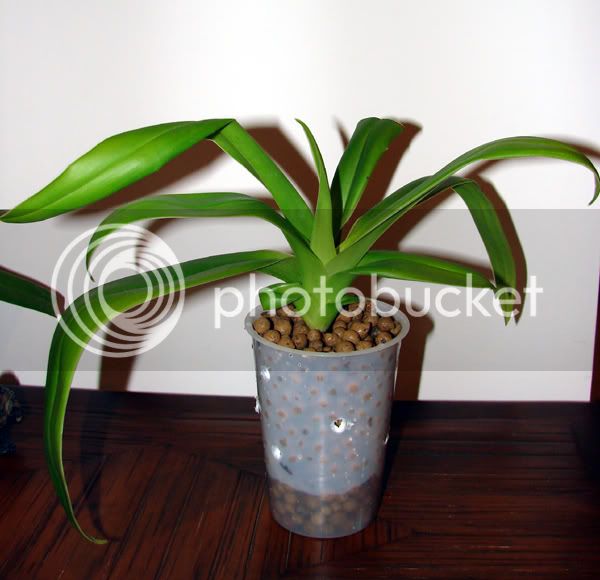E
Ernie
Guest
Okay, it's been a while and I'm still likin' this SH stuff. I can have my two year old son water and he can't mess up... unless the holes are aiming onto the floor... "Look dad, your flowers pee too!" My wife does okay with it too.  Seeing roots on the sec Barbata hybrids and Coryos that went into lava pebbles finally and the phals are going absolutely apes#$% in lava pebbles. The results with HygroStone are good too, but it dries out very slowly in pots over about 20 oz in my conditions and looks like phals don't send their roots down as deep into it as they do in lava pebbles. NOT TO SAY I DON'T LIKE THE HYGROSTONE! It has its applications! One just has to understand and adapt to limitations. Ray put it very well above I think. Using ungraded HygroStone in smaller pots where the lava pebbles are too big and using it in shallower pots for instance. It works well in our less humid areas (windowsills at work and home for instance). Grading it for larger pots would help too. So would using a shallower reservoir (holes closer to the pot bottoms). We had some pretty sad looking phals that have made a startling recovery in SH, BUT they probably would have perked up even if we repotted them into the same bark mix blend they were in. So... we'll keep watching to see how they do. Tips here to prevent salt buildup etc have been very useful. Namely, not letting them get bone dry (to keep excess salts in solution instead of crusting up the rocks) and watering to the tops of the pots each time. Not a single plant has gone backwards in health since potting into SH... Stay tuned. Cheers!
Seeing roots on the sec Barbata hybrids and Coryos that went into lava pebbles finally and the phals are going absolutely apes#$% in lava pebbles. The results with HygroStone are good too, but it dries out very slowly in pots over about 20 oz in my conditions and looks like phals don't send their roots down as deep into it as they do in lava pebbles. NOT TO SAY I DON'T LIKE THE HYGROSTONE! It has its applications! One just has to understand and adapt to limitations. Ray put it very well above I think. Using ungraded HygroStone in smaller pots where the lava pebbles are too big and using it in shallower pots for instance. It works well in our less humid areas (windowsills at work and home for instance). Grading it for larger pots would help too. So would using a shallower reservoir (holes closer to the pot bottoms). We had some pretty sad looking phals that have made a startling recovery in SH, BUT they probably would have perked up even if we repotted them into the same bark mix blend they were in. So... we'll keep watching to see how they do. Tips here to prevent salt buildup etc have been very useful. Namely, not letting them get bone dry (to keep excess salts in solution instead of crusting up the rocks) and watering to the tops of the pots each time. Not a single plant has gone backwards in health since potting into SH... Stay tuned. Cheers!
-Ernie
-Ernie
Last edited by a moderator:





